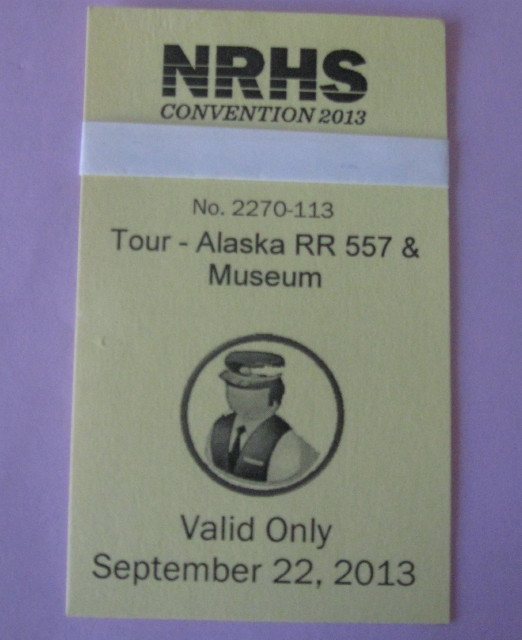After
everyone had a good look and had their questions
answered, it was time to board our bus and travel
to our next stop.
The Museum
of Alaska Transportation and Industry (MATI) is a
nonprofit organization and its mission is the
collection, conservation, preservation, display
and interpretation of artifacts related to
Alaska's transportation and industrial history.
MATI was basically created to display and collect
the machinery left over from the bursts of growth
in Alaska's economy. Resources discovered meant
that railroads had to be built, aircraft had to be
assembled, and roads had to be cleared for the
development to continue. After the resources were
exhausted, the machinery used remained in the
forest and tundra due to the high costs of
transportation for removal of the equipment, while
the workers moved out.
MATI has gathered those
machines left to rust and preserved them to
educate the public and present an educational,
historical account of the history of
transportation and industry in Alaska and the
people of the era. A complete timeline of
artifacts shows the progress that has been made
through Alaska's history.
The museum features railroad,
airplanes, boats, trucks and automobiles, as well
as dog sleds and snowmobiles - a full collection
of Alaska transportation vehicles. Displays also
include information on the other Alaska
developments such as the telephone the electrical
industries. The role of the military in Alaska's
development is also covered. Its aviation exhibits
include aircraft from ultralights to a C-123.
Several early aircraft engines are displayed, as
are photographs and artifacts associated with
Alaska's early flyers.
After we
arrived and before disembarking the bus, we were
welcomed to the museum and Wasilla by a nice
hostess. She was dressed in a period costume which I
think was early 1900's. Later we were to find out
this was a special lady. After our welcome went
inside for a look around.
I operated these projectors while in high school
for class in late1950's.
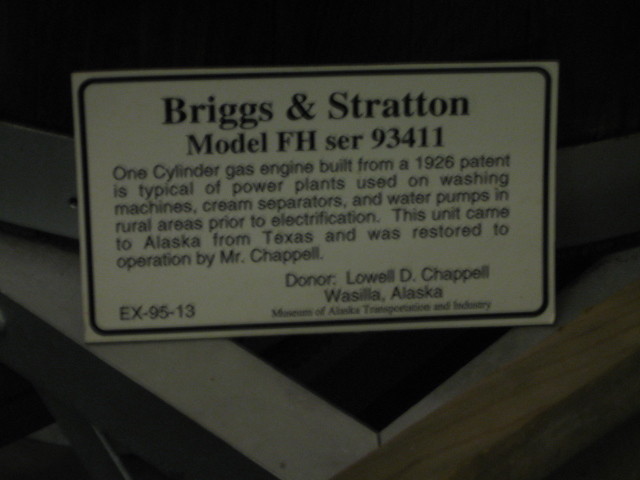
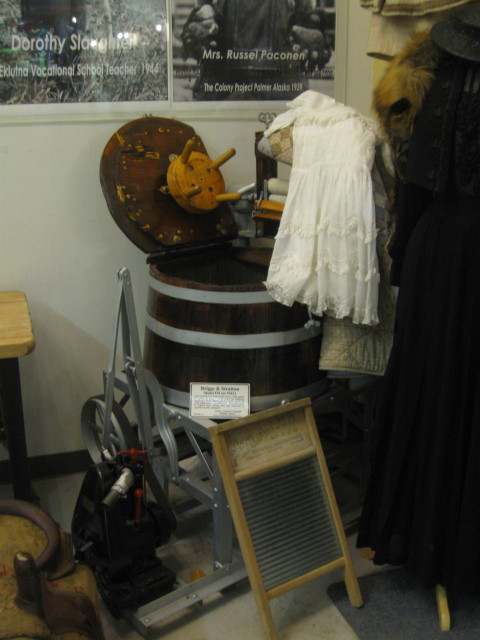
/
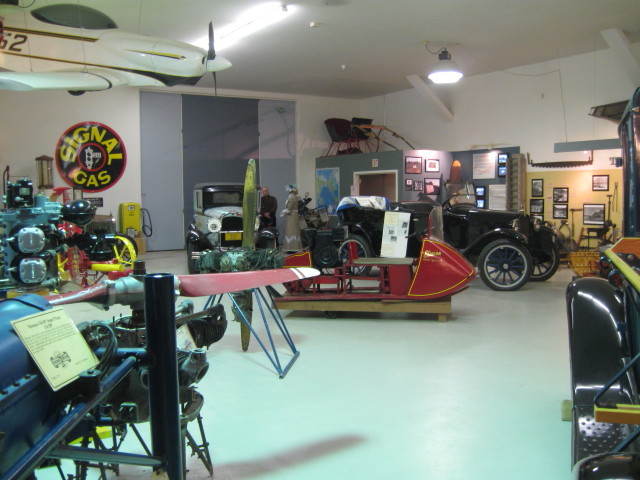
When we were finished
perusing the inside of the museum, we were
called to lunch. The museum volunteers were
hosting us for a pot luck lunch. There were two
seatings. The first bus went first and we were
the second seating. We were called to the
upstairs meeting room for an assortment of home
cooked dishes, among which were moose stew and
reindeer sausage. It was very hospitable of the
local folks to treat us to this nice meal.
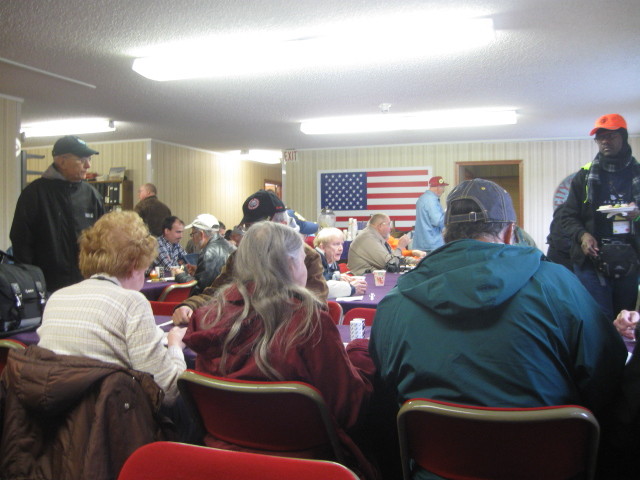
Having lunch in the museum.
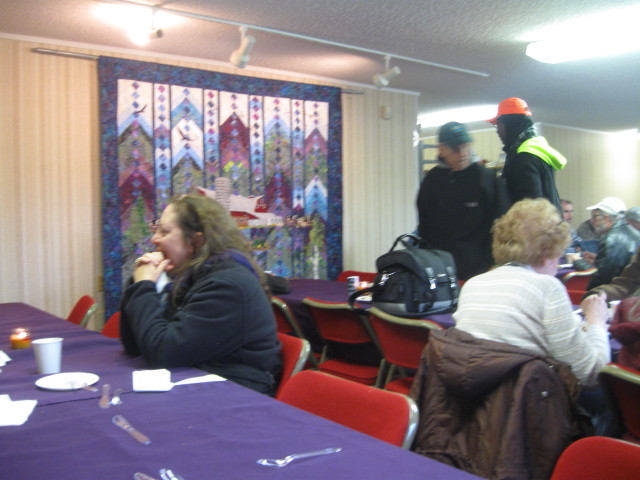
After a good home cooked
meal it was time to head outdoors and see
the exhibits.
Exhibits include tractors, fire trucks, and
other vehicles from the 1920's to
1960's; five diesel locomotives and 20
pieces of railroad rolling stock; mining
equipment; antique steam and gas engines;
and boats. This equipment is displayed
across acres of museum property.
This
museum features the original collection of
the Alaska-Yukon Chapter of the National
Railway Historical Society and today
includes more than 35 locomotives, passenger
cars, and fright cars, plus numerous
railroad displays. Included in this is the
former Whitney Section House and the
original "The Alaska Railroad" header from
Whittier Tunnel.
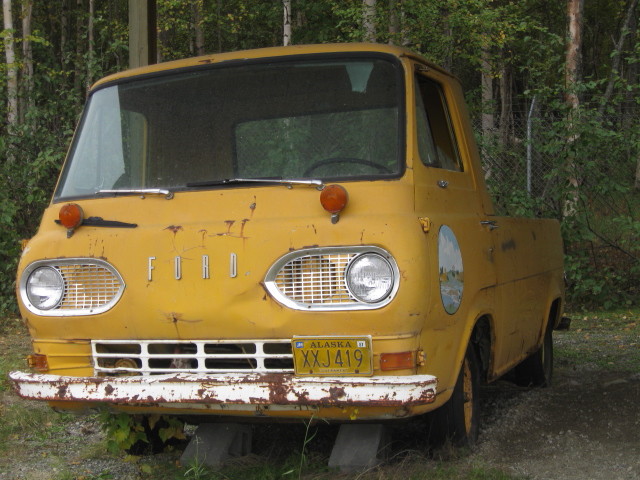
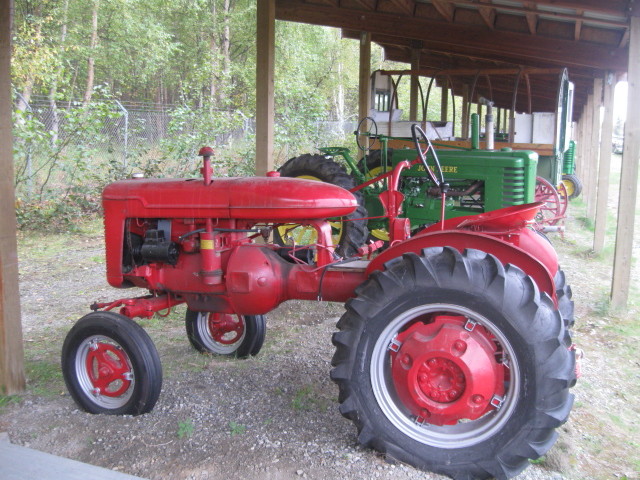

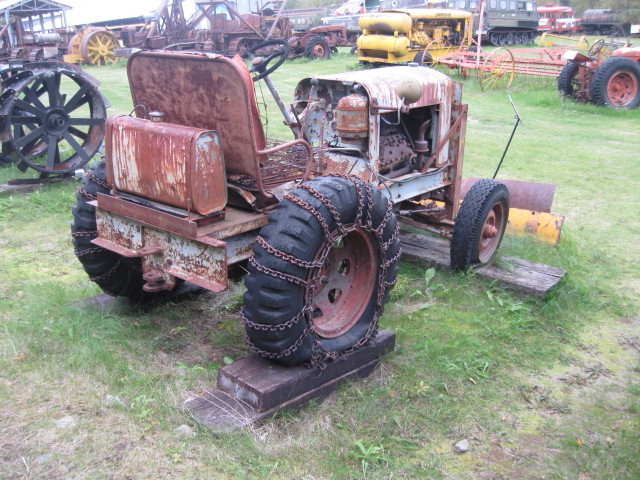
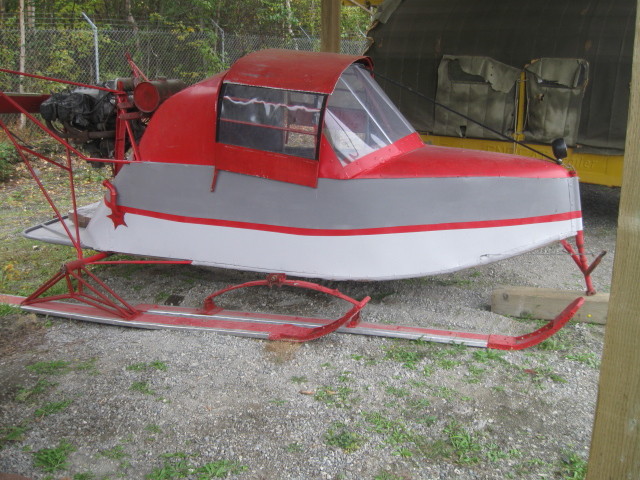
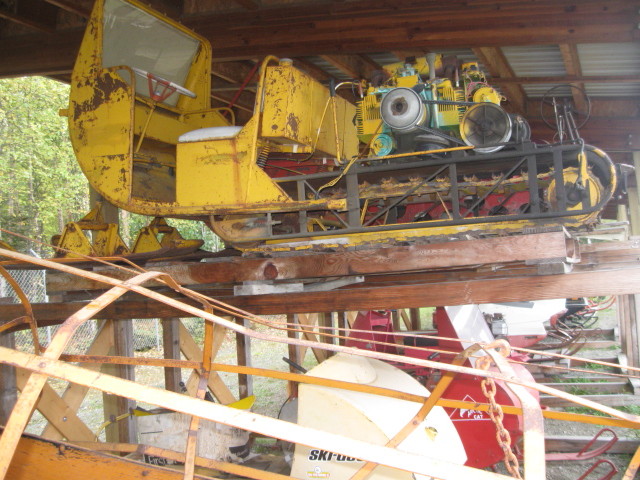
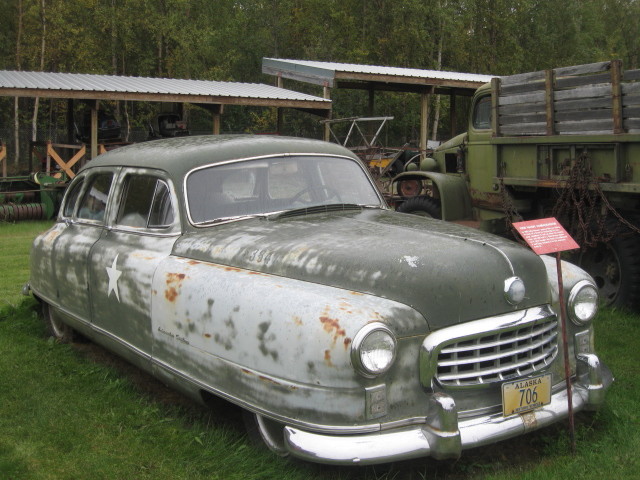
Nash.
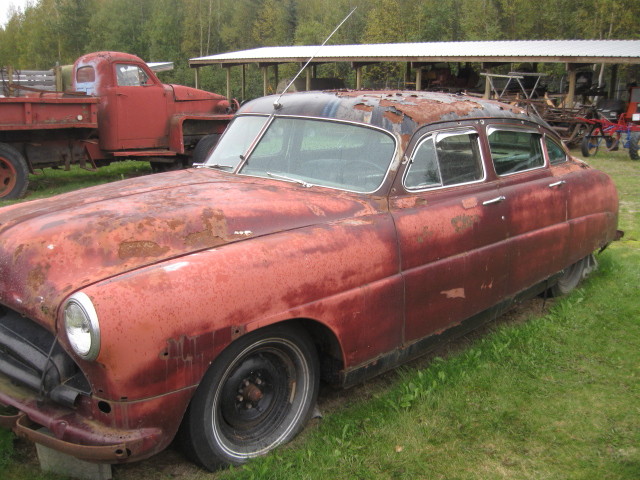
Hornet

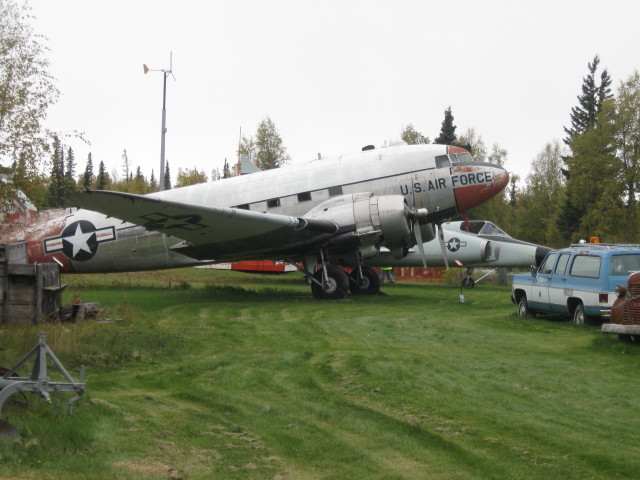
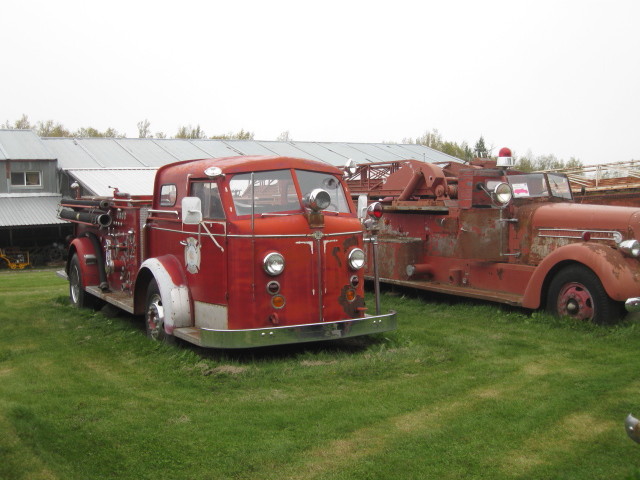
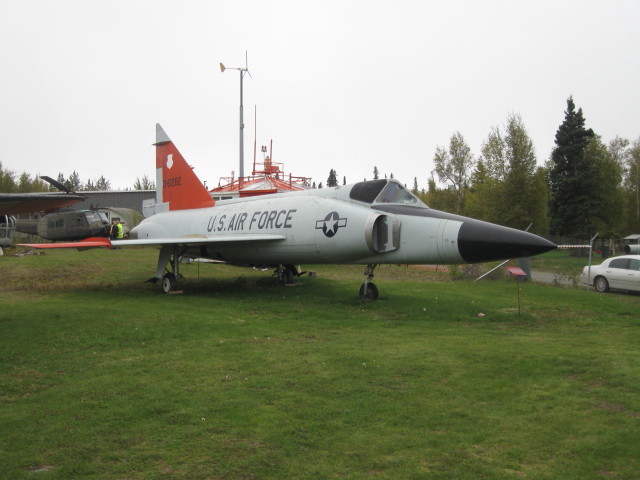
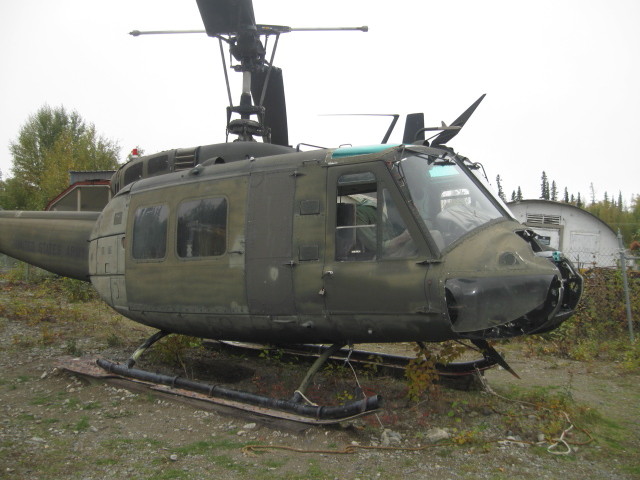
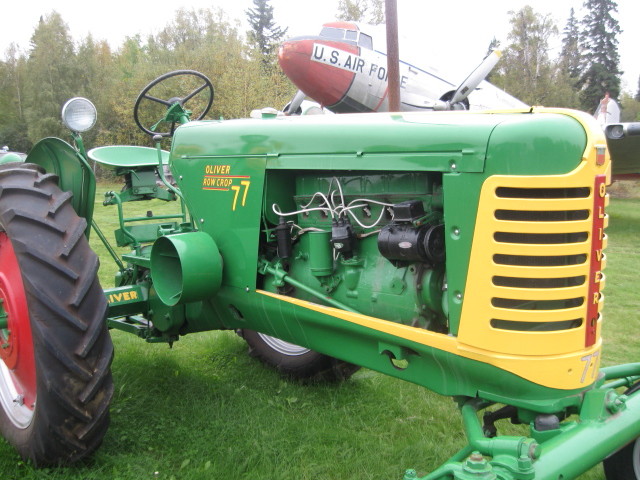
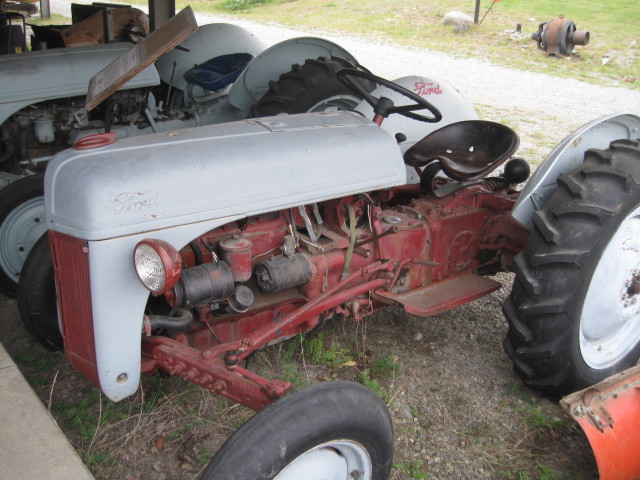
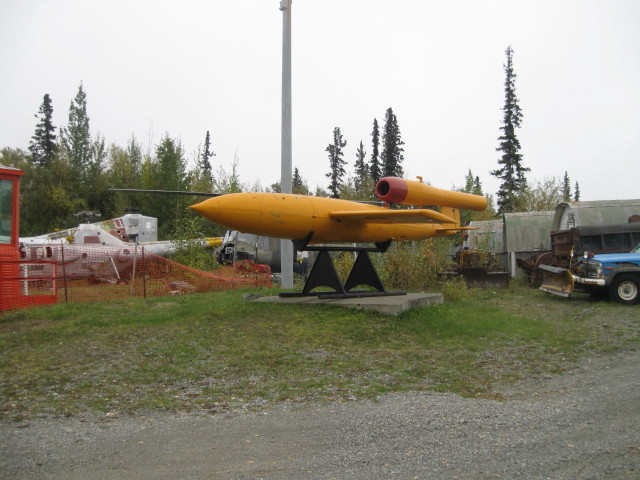
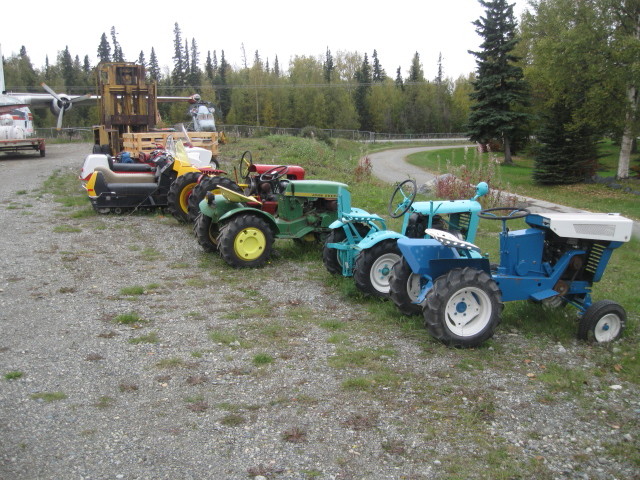
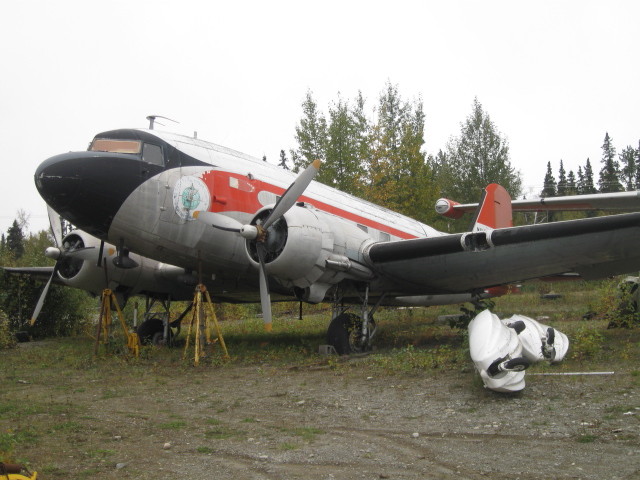
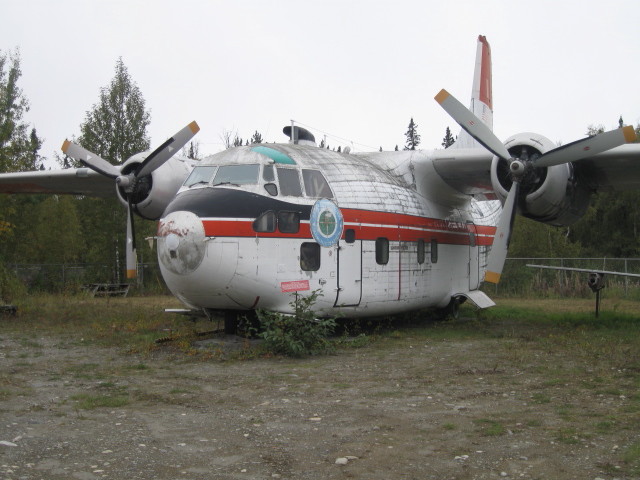
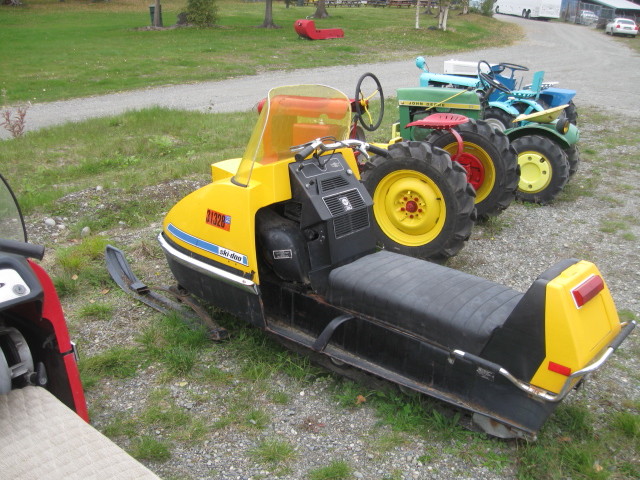
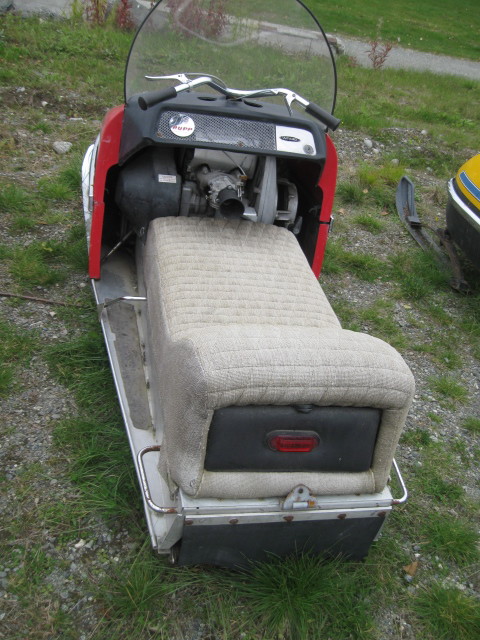
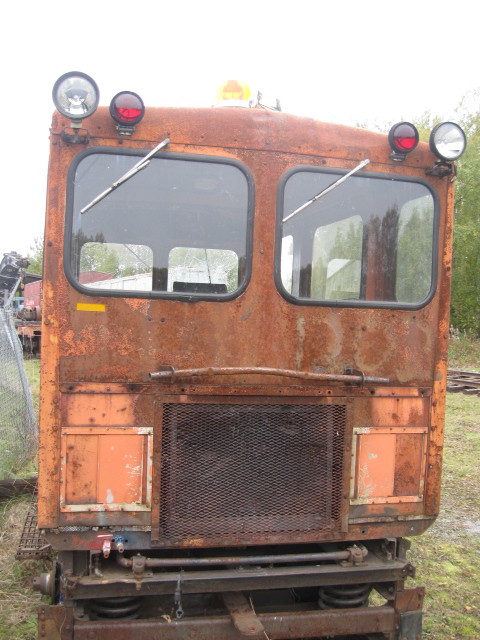
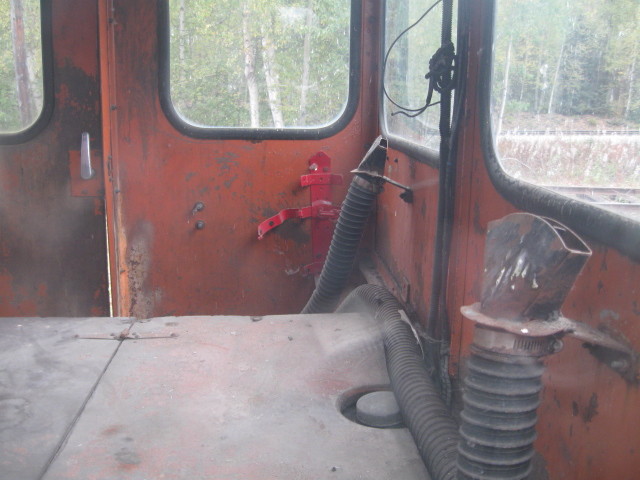
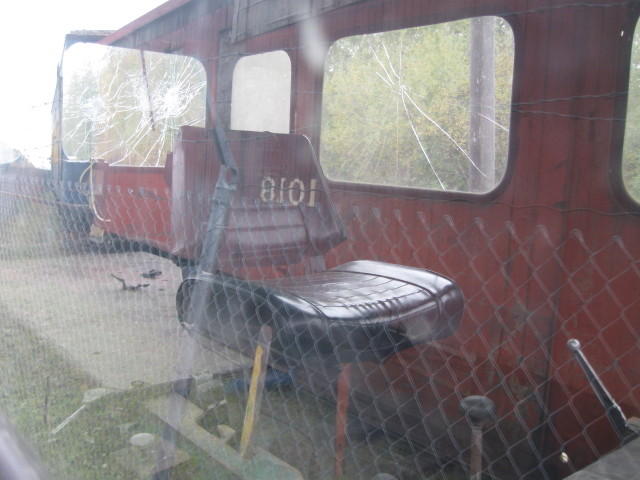
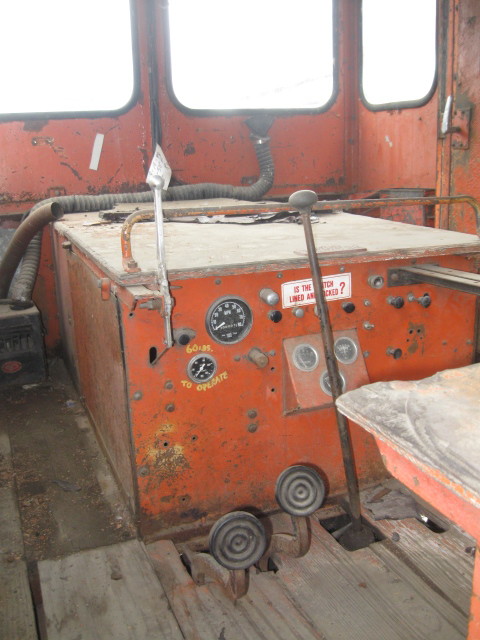
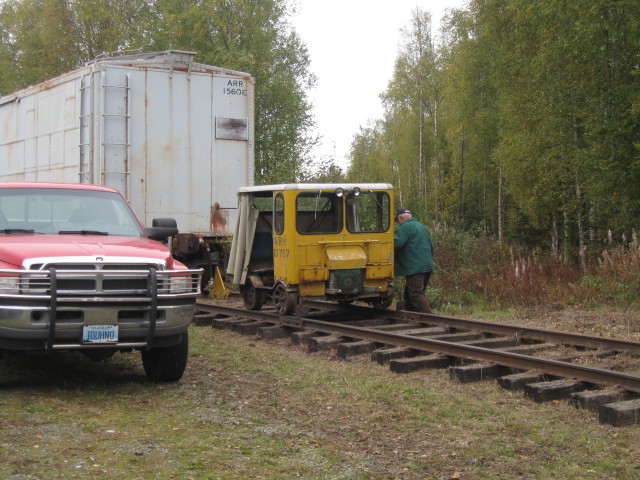
You could take a short ride in this on track on
the museum grounds
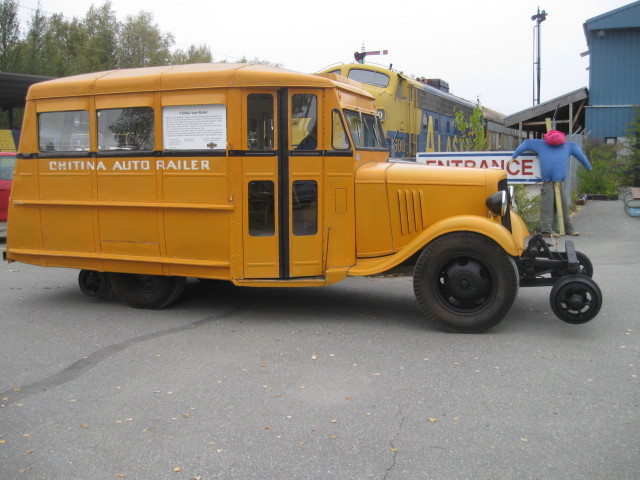
You could take a short ride in this vehicle around
the museum grounds.
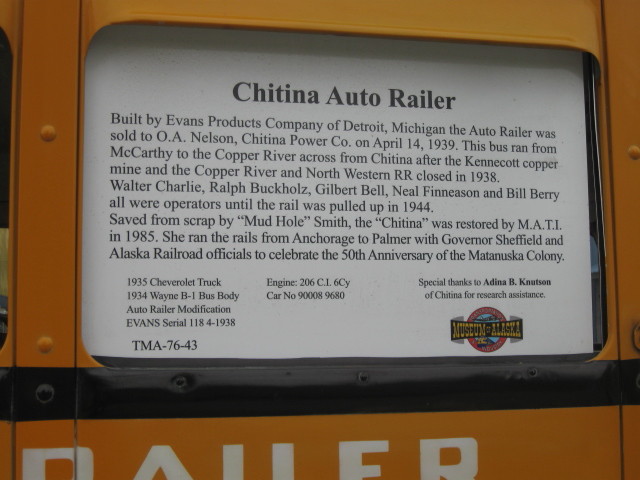
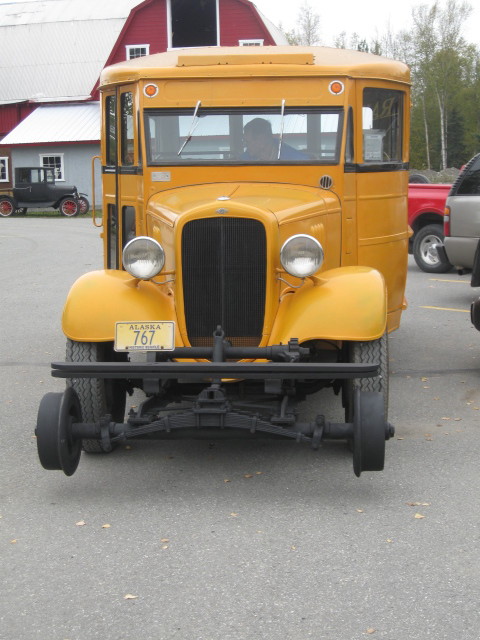
About 2:30 P.M. it was time
to board our bus for the trip back to Anchorage.
MP 159.8
Wasilla - The town site was established at the
intersection of the Kink-Willow mining trail and
the newly-constructed Alaska Railroad the the
elevation of 330 feet. It was a supply base for
gold and coal mining in the region through World
War II. The Matanuska-Susitna (Mat-Su) valley
was settled by many homesteaders as part of an
experiment in the 1930's. While most soon failed
and moved away, enough stayed to develop the
region. Agricultural crops and natural resources
sustained growth and development in the valley.
Mining in Wasilla played an integral role
through much of World War II and the mid-20th
century; a handful of the area's mines, which
once numbered more than 50, remain active to
this day.
The Alaska
Railroad has been realigning 44 miles of
mainline track south of here, straightening
about 70curves, between Wasilla and Anchorage.
The project increases the speed that trains can
safely travel. Travel time between Anchorage and
Wasilla is expected to drop from 90minuted to
less than an hour, making rail commuter service
feasible. The track relocation would eliminate
five at-grade crossings, reduce operational and
maintenance costs, and allow for faster train
speeds.
After we
re-boarded our bus, we were informed that the
nice hostess who greeted us on our arrival was
the mother-in-law to a former Alaska Governor.
It was
near 3:30 P.M. when we arrived back at the
Hilton. I walked across the street to the
Eisenhower Statehood Monument.
The Alaska Railroad Depot.
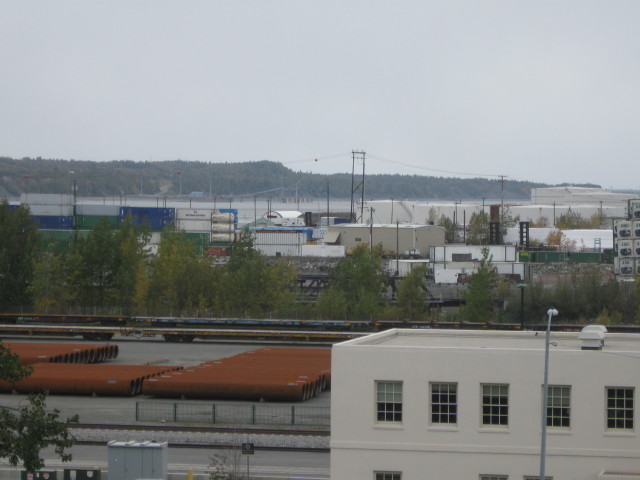
Anchorage harbor and rail yard.
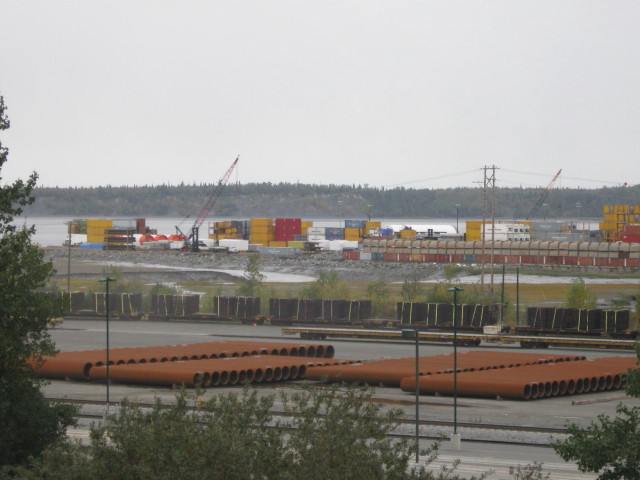
I took a scenic walk thru
downtown to return to the motel. Needed to
pick-up some souvenirs and gifts. I walked down
4th Ave to the courthouse and back.
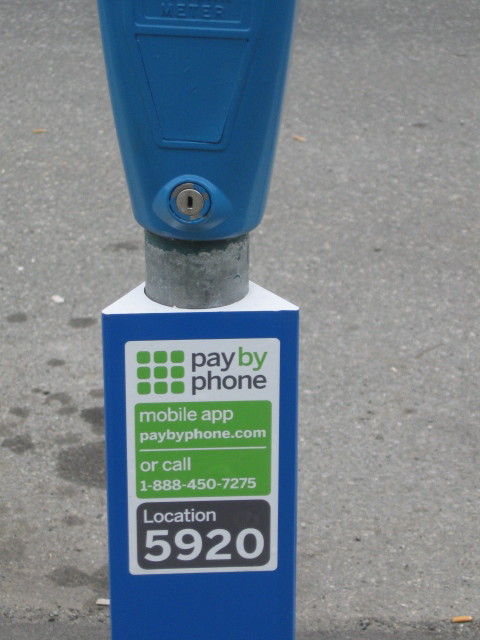
No loose change needed.
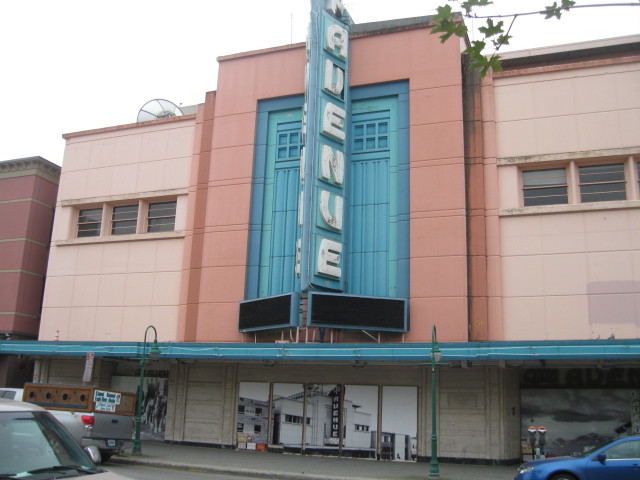
4th Ave Theater, downtown's last, looks to be no
more.
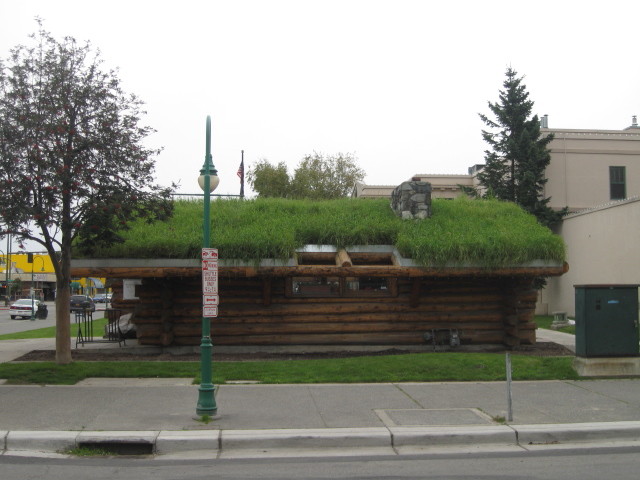
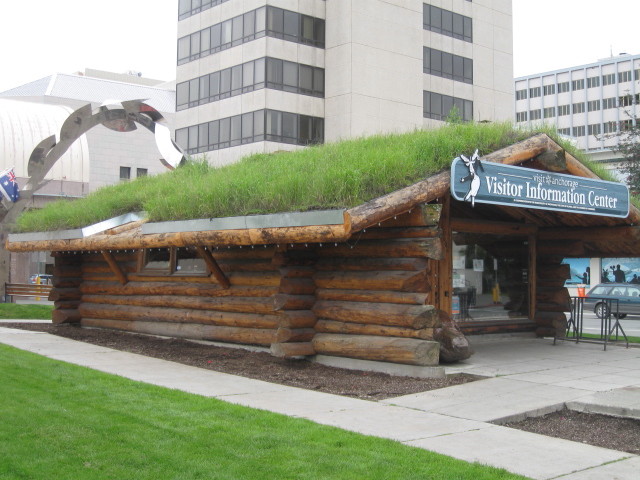
Self-guiding tours: A guide
outlining a walking tour and driving tours north
and south of the city is available at Log Cabin
Visitor Information Center, Fourth Avenue and F
Street.
After
shopping and back at the motel, meet with Chris
G. and we decided for our last meal in Alaska we
would go next door for a Mexican meal at La
Cabana Restaurant. So good and just a walk
across the parking lot. Afterwards we waited the
motel lobby for our flights. Also waiting were
several young people for their flights. They had
just finished their summer employment and were
returning to home, school or winter employment.
Then it
was time to leave for the airport. We were able
to get a ride to the airport with the motel
shuttle and this was a great benefit offered by
Guesthouse Anchorage Inn. I enjoyed my stay here
and would stay again if I returned.
We arrived
at the airport, did the security thing, and
proceeded to the gates waiting area. This was my
third trip to the airport. Also in the waiting
area were many fellow conventioneers waiting for
their flights. My fight was to Portland with a
change of planes there. I decided to stop in
Portland because had never been there and this
was chance to see it. In Portland, didn't have
much time to look around. Just enough to get a
bagel and board a new plane for Los Angeles.
After getting airborne, out the windows the sun
was cracking the darkness.
Arrived in Los Angeles after two smooth flights.
It was a sunny morning here at 9 AM and I went
to the Flyaway bus stop. At 9:40AM was pick-up
by the Union Station bound bus. Arrived at Union
Station at 10:15AM. That gave me some wait time
for my Surfliner train # 572 with a 11:15AM
departure. 572 left on time and arrived in Santa
Ana on time at 12:03PM. Walked over to the
parking structure and retrieve my automobile and
then drove home with arrival at 12:50PM.
It
was good to be back home and in familiar
surroundings, but I was grateful and happy I
took a step out side of the comfort zone and
went on this once-in-lifetime adventure. I
definitely would make another trip and visit to
the Last Frontier. I recommend every one make a
pilgrimage to the 49th State.
Thanks for reading.
